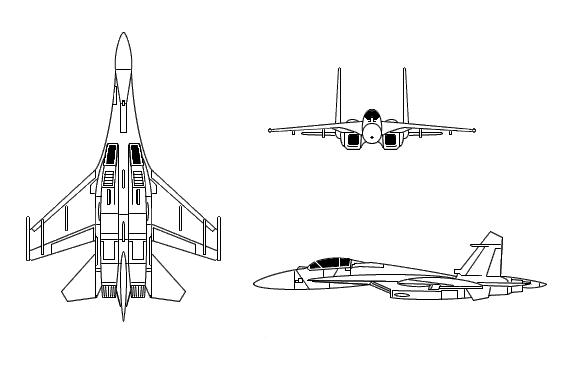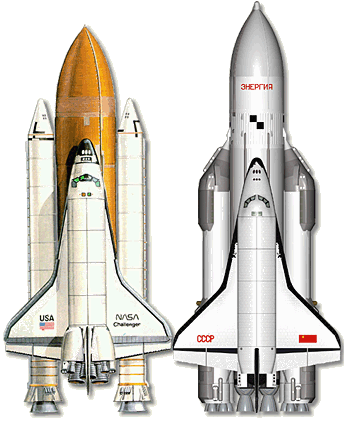
Su-27 "Flanker"
Posted on 04/23/2008 1:11:44 AM PDT by CarrotAndStick
MOSCOW: Russia has threatened to sue China for copying its Sukhoi Su-27SK fighters and its pirate production for export to Pakistan and other Third World countries at much cheaper prices, a leading Russian daily reported on Tuesday.
"Russia has officially notified China that the production of J11 (fighters), a copy of Russian Su-27SK, violates inter-governmental agreements. Moscow has vowed to launch legal procedures for the protection of its intellectual property," Nezavisimaya Gazeta said.
Under the 1996 agreement, China had the right to assemble 200 Su-27SK fighters under the local brand J11. However, after receiving 95 kits and 180 AL31F engines, Beijing in November 2004 notified Moscow that it no more needs Russian kits for the assembly of Su-27 fighters, saying that combat capabilities of the fighter were very limited and further action would be taken after analysis of production experience by Chinese experts, the paper said.
"It seems the analysis was successful, as in the beginning of 2007, China unveiled its 'development' — J11B fighter, suspiciously reminding of Su-27," the daily reported.
Now, Moscow seems to have completely stopped the deliveries of engines. The onboard Zhuk radar is one of the problem modules for China as from the very beginning it was supplied with limited combat capabilities, the report said.
"What irks Moscow most is that the 1996 agreement did not allow the re-export of J11 to third countries, but now Beijing is busy in the search for the markets of this fighter.
First in the queue is Pakistan," it said, adding China plans to build 5,000 J11B fighters. Given their cheap price, J11B fighters may wipe out not only Su-27, but also MiG-29 and US F-16 from the Third World markets.

Su-27 "Flanker"
Chinese J-11
They want to SUE China for copying a fighter? Good luck with that Putin :)
Codenamed `Flanker' by NATO, the J-11 [Su-27] is a multi-role fighter bomber and air superiority aircraft which can also be used in the maritime strike role. The Flanker has an operational radius of around 1500 km, and is equipped with an inflight refuelling facility extending their radius by another 500 km. Although normally configured for conventional operations, the J-11 could provide China with a high-performance nuclear-capable strike aircraft.
The acquisition of Su-27, after China had attempted for years to develop the J-10 aircraft with equivalent technology to perform similar functions, demonstrates a lack of confidence in domestic industrial capabilities.
In 1991 China purchased an initial batch of 24 SU-27s for about $1 billion which were delivered in late 1992 and based at Wuhu Air Base, 250 kilometers west of Shanghai. In May 1995 China purchased a second batch of 24 SU-27 aircraft through Russia's main state-run arms exporting company Rosvooruzheniye. These were delivered in April 1996 and based at Suixi Air Base in Southern China. The 48 Su-27-type aircraft include 36 one-seat Su-27SK manufactured in Komsomolsk-on-Amur and 12 two-seat Su-27UB manufactured in Irkutsk, worth a total of 1.7 billion dollars.
In February 1996 Moscow and Beijing reached a $2.2 billion agreement for Chinese co-production of the Sukhoi Su-27. Under the initial agreement China would produce up to 200 aircraft [without the right to reexport the jets to third countries] from Russian-made components over three to five years. The total cost of the contract is $1.5 billion, including $650 million for technical documents and $850 million for parts, instruments and equipment provided by Komsomolsk-on-Amur Aviation Enterprise imeni Yuriy Gagarin [KnAAPO], which is to deliver around 30 percent of all completing parts for 200 Chinese SU-27SK jets. Russia has licensed coproduction of Su-27s to the Shenyang Aircraft Company, which can produce fifteen to twenty per year. In the period 1998-2000 Shenyang plans to assemble only 15 Su- 27SK fighters of the 200 permitted under the terms of the contract. The first two aircraft built at Shenyang flew at the end of 1998. Eventually China might seek to obtain as many as 300 Su-27s.
However the integration of the Su-27 into the Chinese Air Force has proven difficult, particularly with respect to training and maintenance costs. Russia delivered parts and assemblies for 2 fighters, which were assembled in 1998, bringing China's total inventory to some 50 aircraft. However, these initial airframes proved unsatisfactory, and no additional production had been completed by late 1999. By the end of 2000 deliveries are planned for the parts and assemblies for the first batch of 15 Chinese-built fighters.
In March 1996, the PLA Air Force and other PLA elements conducted joint-service exercises in the Taiwan Strait. During these exercises the JL-11 [Su-27] fired a variety of air-to-ground rockets, and also dropped four deceleration bombs similar to the US MK82 Snake-Eye, the first time that such bombs have been shown publicly. These exercises clearly stressed the bombing capabilities of the JL-11, suggesting that radar and computer software improvements to its air-to-surface attack capacities may have incorporated the advanced SU-35 fire control equipment and functions to provide high accuracy munition delivery.
In mid-1999 Russia agreed to sell as many as 72 of the front-line Sukhoi-30 variant of the SU-27 jet to China, in addition to the Su-27 aircraft previously agreed to. As a result of the 7th session of the Russian-Chinese commission on economic cooperation held in Beijing in August 1999, the two countries reached a general agreement on the deliveries to China of the Su-30MKK two-seat multipurpose fighters, worth a total of about two billion dollars. Under the agreement, Russia will start delivery of about 40 the jets to China between 2000 and 2002. The Sukhoi Design Bureau developed state-of-the-art Su-30MKK (modernised, commercial for China) especially for the specific requirements of the Chinese military. At the same time, negotiations began for Moscow to grant a licence for the production of another 250 Sukhoi-30 fighters, though it is unclear whether this production would be in addition to or instead of the licensed production of the SU-27.
At the end of 1999 it was anticipated that the Irkutsk aviation industrial association will deliver to China a total of 28 training and combatant Su-27UB fighters. The delivery will be implemented to repay the state debt, and 8 planes will be delivered to China within the year 2000, 10 planes in the year 2001 and 10 planes in the year 2002.

Beautiful planes, IMHO, can be had for as little as 1.5 Million on the international market. No match for an F-15 much less an F-22.
Bwaaahaaahaaa.
Irony is lost on liberals and Communists, of which Putin is one.
Russians suing someone for copying some item of military hardware they made? Geez...nearly half a century of copying from other people must have made them lose sight of their roots...
Most people don’t know it yet, but Intellectual Property Rights is non-existent in China. If they see it, it is theirs. They do a little Kabuki show for the West sometimes, appearing to crack down on movie/software pirates, arresting a few people, but they are all for it.
 http://www.buran.ru/images/gif/mtkkman.gif
http://www.buran.ru/images/gif/mtkkman.gif
Communist, and not only them, have trouble with rewarding the workers of the world. Basically, if you can keep in the air a Chinese assembled, Russian built, American copy.....why would you work for the Chinese Air Forces?
The lack of design innovation in an economic environment which excluded innovators meant
that Soviet Russian technology often lifted concepts directly from the West. Not just little things
like microprocessors and computers, but massive projects like Superfortress bombers, the
Concorde and even the Space Shuttle.
You forgot the J-7 Fighter..
It was the direct Chinese knockoff of the MIG-21 fighter.. Russian sold them them the first few.. then relations between them soured and China then reversed engineered the plane and continued to build the J-7.
Disclaimer: Opinions posted on Free Republic are those of the individual posters and do not necessarily represent the opinion of Free Republic or its management. All materials posted herein are protected by copyright law and the exemption for fair use of copyrighted works.